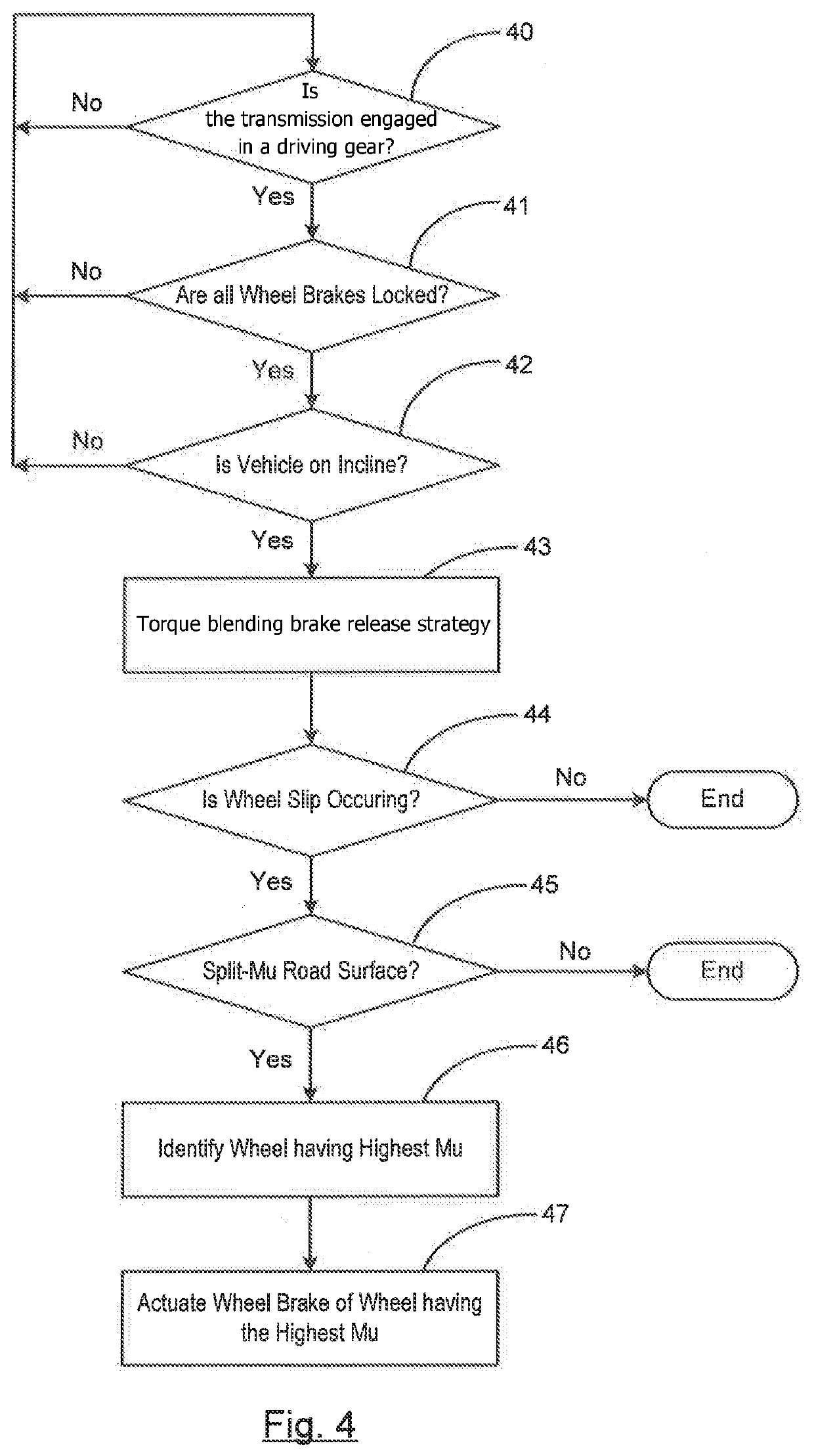Traction control rollback mitigation on split mu grades
a technology of traction control and split mu, which is applied in the direction of brake systems, vehicle components, propulsion unit safety devices, etc., can solve the problems of disconcerting vehicle rollback, tire failure to contribute significantly to uphill climb, and vehicle rollback, so as to reduce vehicle rollback, minimize vehicle rollback, and reduce vehicle rollback
- Summary
- Abstract
- Description
- Claims
- Application Information
AI Technical Summary
Benefits of technology
Problems solved by technology
Method used
Image
Examples
Embodiment Construction
[0013]Referring now to the drawings, there is shown in FIG. 1 a vehicle 10 having a stability control system in accordance with the invention for stability controls. The stability control system may suitably be used on a ground vehicle such as an automotive vehicle having four wheels and a brake for each wheel.
[0014]The vehicle is equipped with a plurality of vehicle wheels LF, RF, LR, and RR and a plurality of brake actuators—i.e., actuators and rotors—12, 14, 16, and 18 for braking an associated wheel. The plurality of brake actuators 12-18 are controlled by an electronic stability control unit (ESC) 20 that includes an electronic brake control module (EBCM) 21. EBCM 21 or similar module is a device that monitors and controls electronic braking functionality. The brake actuators 12-18 are not limited to any specific brake arrangement—e.g., a diagonal split arrangement or a front / rear split arrangement.
[0015]The ESC 20 receives inputs from various sensors including, but not limited...
PUM
 Login to View More
Login to View More Abstract
Description
Claims
Application Information
 Login to View More
Login to View More - R&D
- Intellectual Property
- Life Sciences
- Materials
- Tech Scout
- Unparalleled Data Quality
- Higher Quality Content
- 60% Fewer Hallucinations
Browse by: Latest US Patents, China's latest patents, Technical Efficacy Thesaurus, Application Domain, Technology Topic, Popular Technical Reports.
© 2025 PatSnap. All rights reserved.Legal|Privacy policy|Modern Slavery Act Transparency Statement|Sitemap|About US| Contact US: help@patsnap.com



